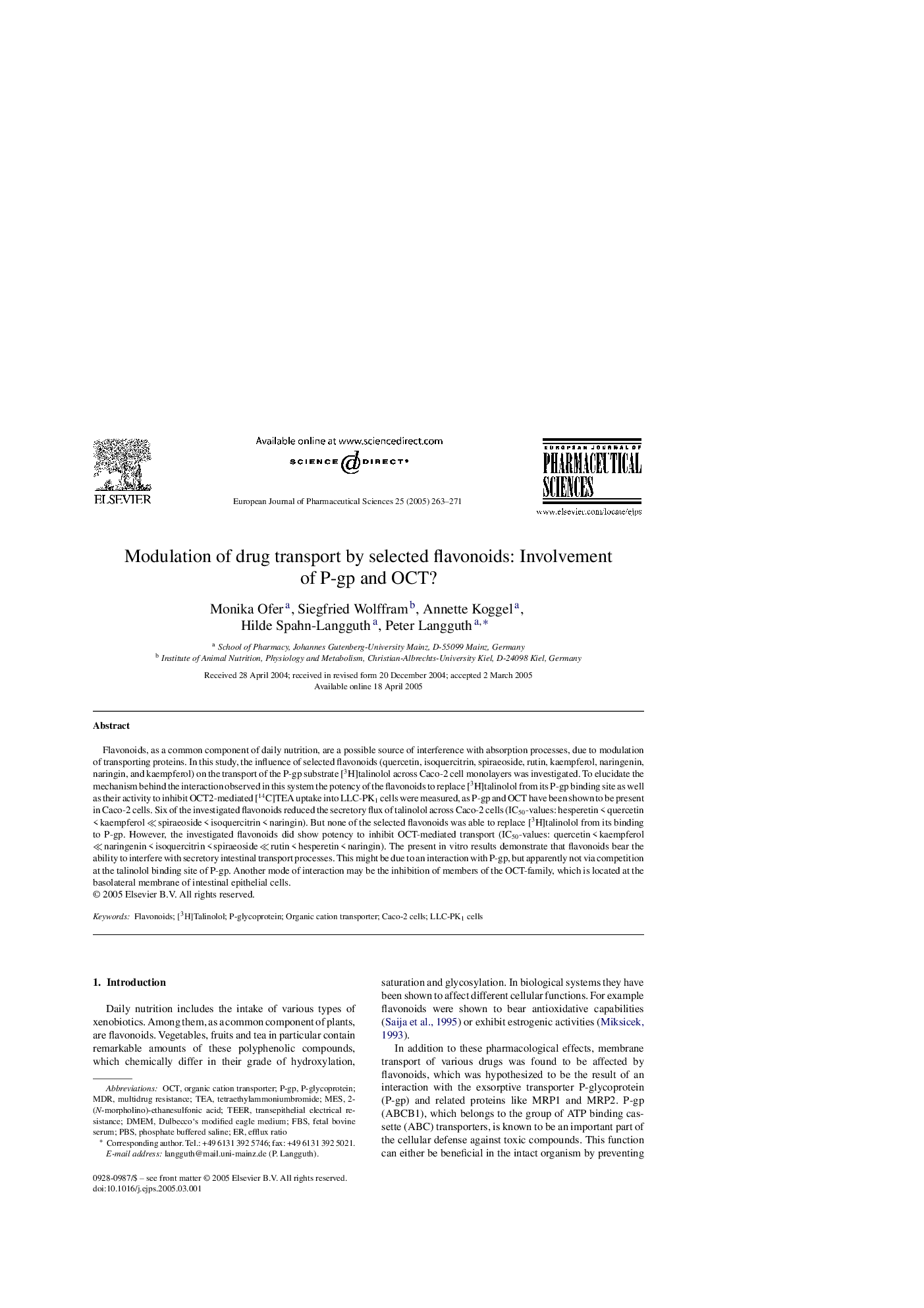| Article ID | Journal | Published Year | Pages | File Type |
|---|---|---|---|---|
| 9917673 | European Journal of Pharmaceutical Sciences | 2005 | 9 Pages |
Abstract
Flavonoids, as a common component of daily nutrition, are a possible source of interference with absorption processes, due to modulation of transporting proteins. In this study, the influence of selected flavonoids (quercetin, isoquercitrin, spiraeoside, rutin, kaempferol, naringenin, naringin, and kaempferol) on the transport of the P-gp substrate [3H]talinolol across Caco-2 cell monolayers was investigated. To elucidate the mechanism behind the interaction observed in this system the potency of the flavonoids to replace [3H]talinolol from its P-gp binding site as well as their activity to inhibit OCT2-mediated [14C]TEA uptake into LLC-PK1 cells were measured, as P-gp and OCT have been shown to be present in Caco-2 cells. Six of the investigated flavonoids reduced the secretory flux of talinolol across Caco-2 cells (IC50-values: hesperetin < quercetin < kaempferol âªÂ spiraeoside < isoquercitrin < naringin). But none of the selected flavonoids was able to replace [3H]talinolol from its binding to P-gp. However, the investigated flavonoids did show potency to inhibit OCT-mediated transport (IC50-values: quercetin < kaempferol âªÂ naringenin < isoquercitrin < spiraeoside âªÂ rutin < hesperetin < naringin). The present in vitro results demonstrate that flavonoids bear the ability to interfere with secretory intestinal transport processes. This might be due to an interaction with P-gp, but apparently not via competition at the talinolol binding site of P-gp. Another mode of interaction may be the inhibition of members of the OCT-family, which is located at the basolateral membrane of intestinal epithelial cells.
Keywords
Related Topics
Health Sciences
Pharmacology, Toxicology and Pharmaceutical Science
Drug Discovery
Authors
Monika Ofer, Siegfried Wolffram, Annette Koggel, Hilde Spahn-Langguth, Peter Langguth,
